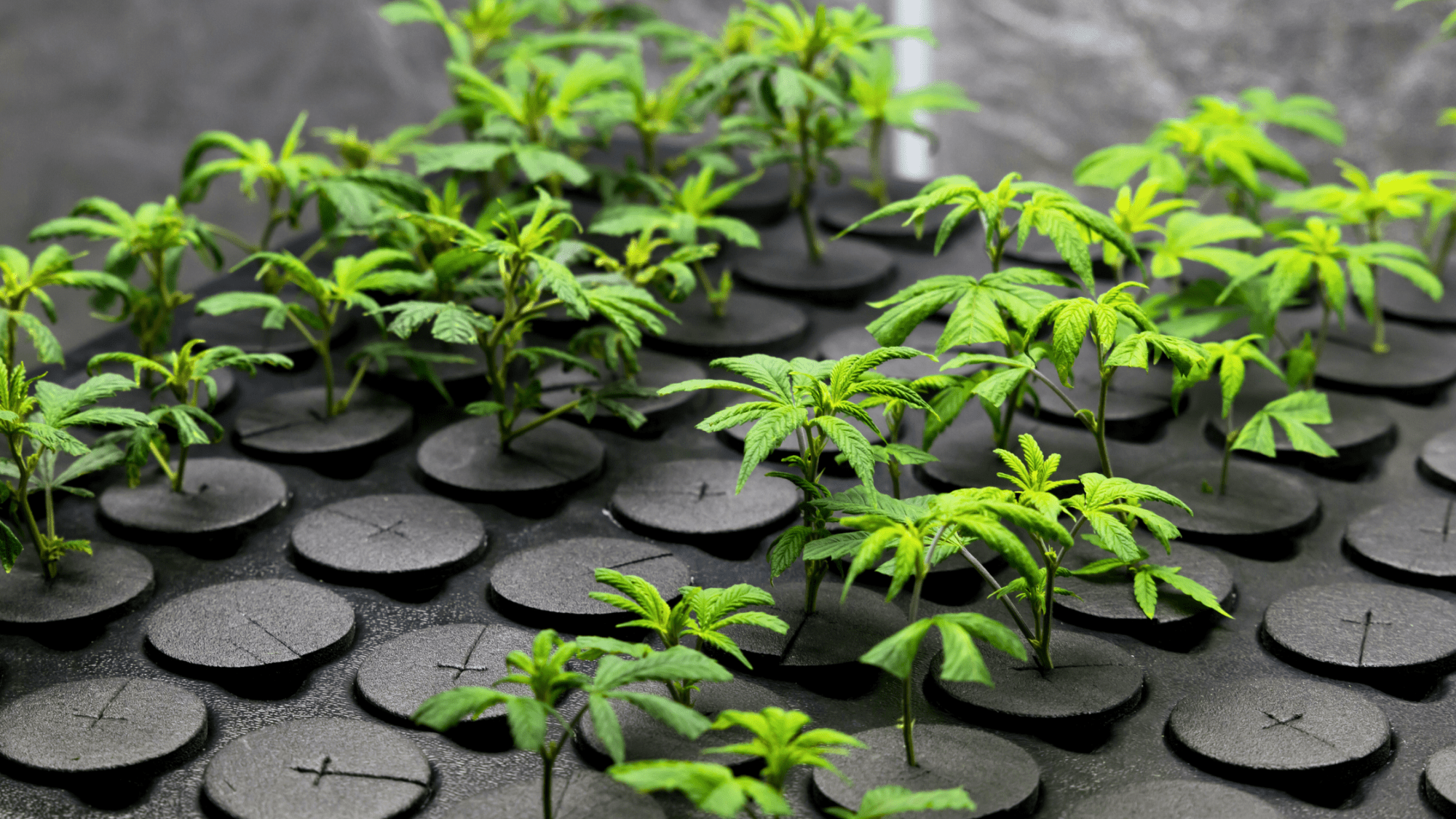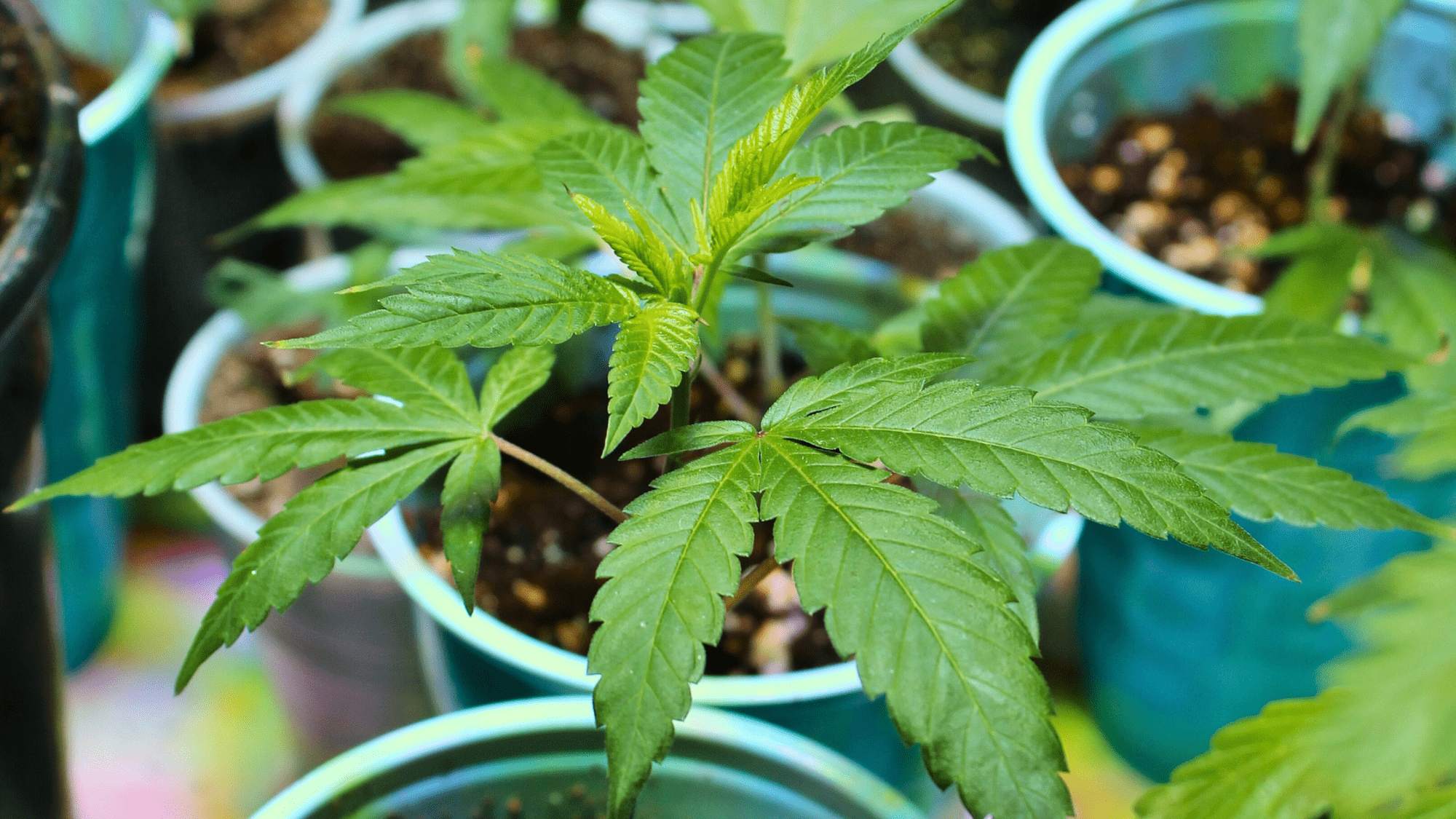Clonal propagation is a method that offers numerous advantages over traditional seed propagation. But how do you manage the complexities that come with cloning cannabis plants?
Cannabis cultivation requires expertise, precision, and the right tools. One of the most critical stages of growing cannabis plants is cannabis propagation, the process of creating new plants. In this post, we’ll delve into the world of cannabis propagation, focusing on clonal propagation, and how GrowerIQ’s seed-to-sale software can help you manage your cannabis clones efficiently.
What Cannabis Propagation Is
Propagation is the process of creating new plants. In cannabis cultivation, there are two primary methods of propagation: by seed and by cloning. According to a white paper on cannabis propagation, “cloning (AKA vegetative propagation or micropropagation) is the most efficient way to ensure a crop is female and has consistent traits and qualities.” Clones are taken from healthy mother plants that are in the vegetative growth stage, ensuring that the crop will be all female and have consistent characteristics.
Why Choose Clonal Propagation
When it comes to cannabis cultivation, making the right choices at the propagation stage can set the tone for your entire growing cycle. Clonal propagation, in particular, offers a range of benefits that can significantly impact the quality and yield of your harvest. Here’s why you might want to consider this method:
Consistency: A Uniform Crop Every Time
One of the most compelling reasons to opt for clonal propagation is the consistency it brings to your cannabis crop. Because each clone is a genetic replica of the mother plant, you’re guaranteed a uniform crop with predictable traits and yields. This consistency is invaluable for medical cannabis producers who need to ensure a stable profile of cannabinoids and terpenes. With GrowerIQ’s seed-to-sale software, you can easily monitor and manage each clone to maintain this high level of consistency.
Gender Assurance: No More Guesswork
In cannabis cultivation, male plants are often undesirable as they can pollinate female plants, leading to a crop that’s less potent and less valuable. Clonal propagation eliminates this risk by ensuring that all clones are female, just like their mother plant. This gender assurance reduces the need for constant monitoring to identify and remove male plants, saving you both time and resources. GrowerIQ’s software can help you keep track of each plant’s progress, making it easier to manage a female-only crop.
Time-Efficiency: Get to Harvest Sooner
Time is money, especially in the commercial cannabis industry. Clonal propagation speeds up the cultivation process as clones take less time to grow compared to seeds. This allows for quicker harvest cycles and faster time-to-market, giving you a competitive edge. GrowerIQ’s real-time monitoring features can further streamline this process, helping you make data-driven decisions that optimize growth rates.

The Time It Takes For Cannabis Clones to Root
One of the most frequently asked questions in cannabis cloning is about the rooting timeline. Understanding how long it takes for cannabis clones to root is crucial for planning your cultivation cycle and ensuring the health of your plants.
In optimal conditions, roots begin to develop after just three to four days. This quick turnaround is one of the many advantages of clonal propagation, allowing growers to move on to the next stages of cultivation more rapidly. However, this period is also critical for the clone’s survival and future growth. Too much or too little moisture, incorrect temperatures, or inadequate lighting can all negatively impact root development.
Cannabis Clones Rooting Materials
Yes, soil is indeed one of the many materials suitable for rooting clonal cuttings. It’s a natural, readily available medium that many growers are familiar with. However, it’s not your only option. Other common mediums include:
- Coco Fiber: A renewable resource that offers good water retention and aeration.
- Jiffy Peat Pods: Convenient and often used for seedlings, but can retain too much water.
- Rockwool: A popular choice for its ideal water retention properties, but it needs to be conditioned before use.
Each medium has its pros and cons, and the best choice often depends on your specific needs, experience, and the conditions in your grow facility. GrowerIQ’s software can help you track the performance of different mediums, providing data-driven insights into which is most effective for your operation.

Dive Deeper with GrowerIQ’s Whitepaper: Mastering The Compliant Grow
If you’ve found this guide helpful and are looking to deepen your understanding of cannabis cultivation, we highly recommend checking out our comprehensive whitepaper, “Mastering The Compliant Grow.” This resource is packed with expert insights, best practices, and actionable advice on how to navigate the complex landscape of cannabis cultivation while staying compliant with industry regulations.
Download the Whitepaper HereUsing Rooting Hormones for Cannabis Cuttings
It’s common practice to dip the base of the stem in a rooting hormone before placing it in a propagation tray. This hormone usually contains liquid auxin, a natural plant hormone that encourages root development. While not strictly necessary, using a rooting hormone can significantly speed up the rooting process and increase the overall success rate of your clones.
When to Transplant Cannabis Clones
Transplanting is a critical step in the life cycle of a cannabis clone, and getting the timing right can significantly impact the plant’s overall health and yield. So, when is the ideal time to transplant your cannabis clones?
Signs It’s Time to Transplant
- Visible Root Development: One of the most reliable indicators that a clone is ready for transplanting is visible root development. Once a robust root system has formed, the clone is strong enough to be moved to a larger container where it can continue to grow.
- Leaf Growth: Healthy leaf development is another sign that your clone is ready for transplanting. Look for new leaves and robust growth as indicators.
- Stem Strength: A sturdy stem is a sign of a healthy, well-rooted clone. If the stem is strong and upright, it’s likely ready for a larger growing environment.
Best Practices for Transplanting
- Be Gentle: Handle the root ball carefully to minimize stress and potential damage.
- Choose the Right Container: Make sure the new container provides adequate space for root growth but is not so large that it hampers moisture retention.
- Monitor After Transplant: Keep a close eye on your clones for the first few days after transplanting. Look for signs of transplant shock, like wilting or leaf discoloration, and adjust your care regimen as needed.

Choosing the Right Container for Cannabis Plants
Cultivating cannabis successfully hinges on several factors, and one crucial aspect is selecting the right container for your plants. Every grower may have their own preferences, but some fundamental principles apply universally.
1. Drainage is Key: One universal rule is that containers must have holes at the bottom to ensure proper drainage. Cannabis plants are intolerant of waterlogging, so it’s imperative that any excess water from irrigation can escape freely.
2. Size Matters: Container size plays a vital role. For cannabis plants with a 10-week growth cycle, a pot with a 14 cm diameter and a 2.5-liter volume tends to work well. Larger containers won’t harm the plants, but they’ll demand more soil and irrigation, which may not be necessary. A general guideline is to have up to 2 gallons of container capacity per 12 inches of plant height.
3. The Power of Black Pots: Opting for black pots is highly recommended. These containers block light, preventing exposure to the plant’s roots. Light penetration into the soil can confuse the plant and may encourage unwanted algae and pathogen growth.
Container Size’s Importance
Container size isn’t just about convenience; it significantly influences the efficiency of your cultivation space. Adequate space for root spread prevents root binding and promotes healthier growth. It’s also essential to maximize the number of plants that can fit within your growing facility.
Furthermore, the size of the pot during transplantation can have lasting effects on a plant’s success. Well-transplanted plants tend to thrive, exhibiting increased leaf area and overall growth. On the contrary, plants restricted by container size may remain predisposed to drought stress even after being transferred to a larger container.
Understanding the Effects of Root Restriction
Root-bound plants can experience drought stress even when water is provided. This stress can reduce chlorophyll production, impair metabolism, and lead to stomatal pore closure in leaves, inhibiting the release of photosynthetic waste oxygen and further hindering plant metabolism. Consequently, this can result in reduced leaf, seed, and flower production, inefficient nutrient uptake, and lower crop yields.
Selecting the right container size is crucial for ensuring your cannabis plants have the space they need to flourish, ultimately leading to healthier, more productive yields.
Soil Selection for Medicinal Cannabis
While often referred to as soil, a plant’s growing medium is more than just dirt. It comprises various materials blended to cater to a specific plant’s needs, providing both physical support and nutritional requirements.
For optimal growth, the growing medium must strike a balance between water retention and oxygen access. Dense, heavy soils with inadequate oxygen can lead to waterlogged roots, nutrient deficiencies, and potential rot.
A recommended soil mix for balanced moisture retention, oxygen availability, and drainage is 40% peat moss, 50% coco fiber, and 10% perlite. This blend provides an ideal environment for your medicinal cannabis plants to thrive.
In essence, the choice of container and soil composition plays a pivotal role in ensuring the health and productivity of your cannabis plants throughout their growth cycle.

Ingredients of Successful Soil for Cannabis Cultivation
To achieve thriving cannabis plants, the composition of your soil is paramount. Here are key ingredients that contribute to successful soil:
1. Perlite: This small, porous white rock is excellent for aerating the soil and preventing compaction. It ensures that the soil remains well-structured and allows for healthy root development.
2. Peat Moss: Derived from decayed Sphagnum moss, peat moss is mixed with soil to enhance moisture retention, nutrient absorption, and root zone air regulation. Soils blended with peat moss tend to retain more moisture, reducing nutrient leaching and runoff.
3. Coco Fiber (Coco Coir): Obtained from the fibrous region within coconuts, coco fiber has a remarkable water-holding capacity. It can retain approximately 1000 times more water than typical soil. However, it’s important to note that coco fiber naturally absorbs potassium as it decomposes, requiring growers to adjust their nutrient formulations accordingly.
Considering Consistency in Soil Composition
For recreational cannabis cultivation, natural soil conditioners and supplements are often considered to boost beneficial soil bacteria. However, these materials can introduce variations in soil composition, making them less suitable for medical cannabis production. In the medical cannabis sector, growers lean more toward reproducible nutrient formulations that can be precisely supplied along with irrigation water.
Large Scale Cannabis Production and Soil-Based Medium
In large-scale cannabis production, using a soil-based medium is preferred over soilless systems like hydroponics. While hydroponics involves growing plants in water with oxygen provided through mechanisms like bubblers, it poses challenges for producing regulated medicines. Hydroponics demands highly skilled growers and workers and is less forgiving in terms of consistency.
The Importance of Consistency and Reproducibility
For medical cannabis producers, consistency and reproducibility are paramount. Alongside regulatory compliance, large-scale producers aim for crops that consistently deliver plants of the same quality and predictable yields.
This is achieved by utilizing the same soil formula, maintaining uniform container sizes, adhering to consistent nutrient formulations, and adhering to standardized irrigation schedules. These practices ensure that cannabis crops are predictable and successful, meeting the stringent requirements of medical cannabis production.
Your All-in-One Solution for Cannabis Clone Management
Managing cannabis clones involves juggling multiple variables, from light and temperature to nutrients and tracking. It’s a complex process that demands precision and timely decision-making. That’s where GrowerIQ’s seed-to-sale software comes into play, offering a range of features designed to simplify and optimize every aspect of clone management. Let’s delve into how GrowerIQ can revolutionize your cannabis cloning process.
Real-Time Monitoring: Stay in Control 24/7
One of the standout features of GrowerIQ is its real-time monitoring capabilities. The software ensures that your clones are kept in the right amount of light and at the right temperatures. With real-time alerts, you can intervene immediately if any environmental factors go awry, ensuring the health and success of your clones.
Batch Tracking: Organize and Optimize
GrowerIQ offers a robust batch-tracking system. Whole trays of clones can be barcoded with batch information, making it easier to track the progress and health of each batch. This feature is particularly useful where multiple batches may be in different stages of growth, requiring varied care and attention.
Mortality Rate Prediction: Plan for Success
Clone mortality is an unfortunate but inevitable part of the cloning process. GrowerIQ’s software can help predict clone mortality rates, allowing you to plan accordingly. For example, if your mortality rate is at 10% and you’re aiming for a batch size of 500 plants, you should then take 550 cuttings to account for the mortality rate. Knowing this enables you to manage your resources more efficiently and sets you up for a successful harvest.
Nutrient Management: Feed for Growth
Nutrients are the building blocks of plant growth, and clones are no exception. GrowerIQ’s nutrient management feature ensures that your clones are kept at optimal levels. This takes the guesswork out of nutrient dosing, allowing you to focus on other aspects of clone care.
Cannabis propagation, particularly clonal propagation, is an essential aspect of cannabis cultivation. With the proper knowledge and tools like GrowerIQ’s seed-to-sale software, you can manage your cannabis clones more efficiently, leading to higher yields and better-quality plants.
Cloning Checklist with GrowerIQ
- Ensure cuttings are from the same variety of cannabis plants.
- Maintain a proper balance of air and moisture in the propagation medium and tray.
- Document the number of cuttings and those that have died or been disposed of.
- Work with a propagation medium you have had prior success with.
- By integrating GrowerIQ into your cannabis cultivation process, you’re not just adopting software; you’re adopting a more innovative way to grow.
Take Your Cannabis Cultivation to the Next Level with GrowerIQ
Discover how GrowerIQ can revolutionize your cannabis cultivation process. Dive into our software’s features and see firsthand how we simplify clonal propagation, ensuring compliance every step of the way. Whether you’re just starting out or looking to optimize your existing operation, GrowerIQ offers a comprehensive solution that addresses all your cultivation needs. Don’t just take our word for it; experience the revolution for yourself. Start your journey to mastering compliant cannabis cultivation with GrowerIQ today!
Get A Software DemoAbout GrowerIQ
GrowerIQ is changing the way producers use software - transforming a regulatory requirement into a robust platform to learn, analyze, and improve performance.
To find out more about GrowerIQ and how we can help, fill out the form to the right, start a chat, or contact us.

